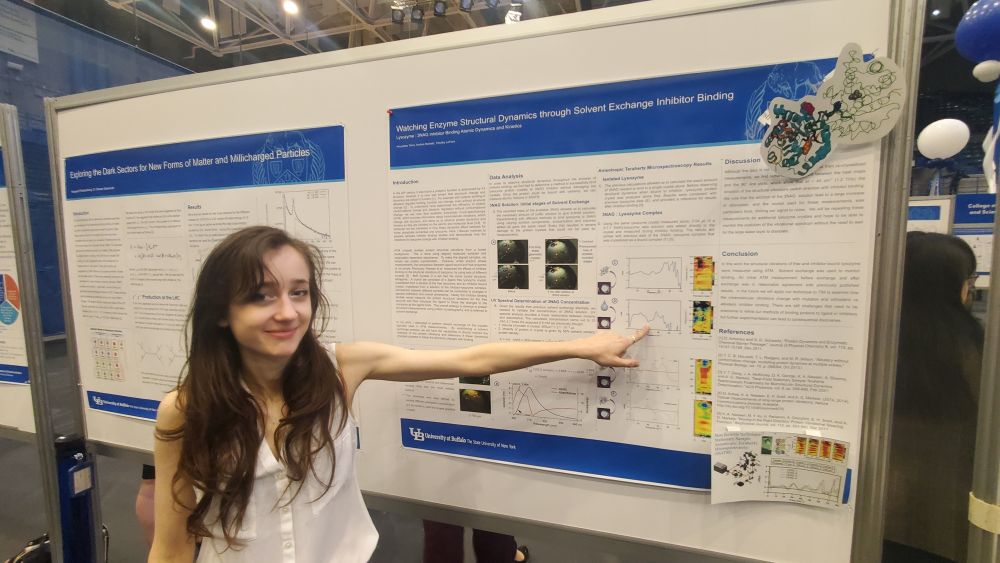2023 Celebration of Student Academic Excellence Student Showcase
- April 26, 2023 -
Watching Enzyme Structural Dynamics through Solvent Exchange Inhibitor Binding
Amandine Tirino, T. LaFave, and A. Markelz
In the 20th century, it was found a protein's function is determined by its structure. However, it is now well known that structural change and dynamics are critical to function[1]. For example, with cofactor binding of allosteric regulator binding, function can change, even without structural change [2]. To understand what determines the efficiency of protein conformational change and allosteric regulation without conformational change, we use near field anisotropic terahertz microspectroscopy (ATM), which provides information about intramolecular vibrations that change with structure and allow us to observe protein dynamics and kinetics as they are inhibited on the atomic and molecular level [3-5]. In particular, we are interested in how these dynamics affect catalysis for trios phosphate isomerase and lysozyme. Here, I discuss methods to prepare samples, inhibitor binding studies, and demonstrate how the vibrations for lysozyme change with inhibitor binding.
ATM uniquely isolates protein structural vibrations from a broad background. This is done using aligned molecular samples and polarization dependent absorbance. To make the aligned samples, we simply use protein crystallization. However, unlike solution phase measurements, the comparison between ligand bound and free enzymes is not simple. Previously, Niessen et al. measured the effects of inhibitor binding on the structural vibrations of lysozyme by using sets of different crystals [5]. Both crystals in a set had the same crystal structu4re, tetragonal. A crystal set consisted of a ligand free lysozyme crystal crystallized from a solution of the inhibitor-lysozyme complex. Comparison between different samples can be vulnerable to changes in sample orientation and overall dimension. Ideally the inhibitor binding studies would measure the protein structural vibrations for the free enzyme and then introduce the ligand to follow the changes to the vibrations as the ligand binds. This overall strategy is common in protein structural measurements using protein crystallography and is referred to solvent exchange.
In my work, I attempted to perform solvent exchange on the crystals typically used in ATM measurements. By establishing a solvent exchange protocol we will have the capabilities to directly monitor the changes of the protein vibrations and determine if these dynamical changes proceed or follow the structural changes with binding.
